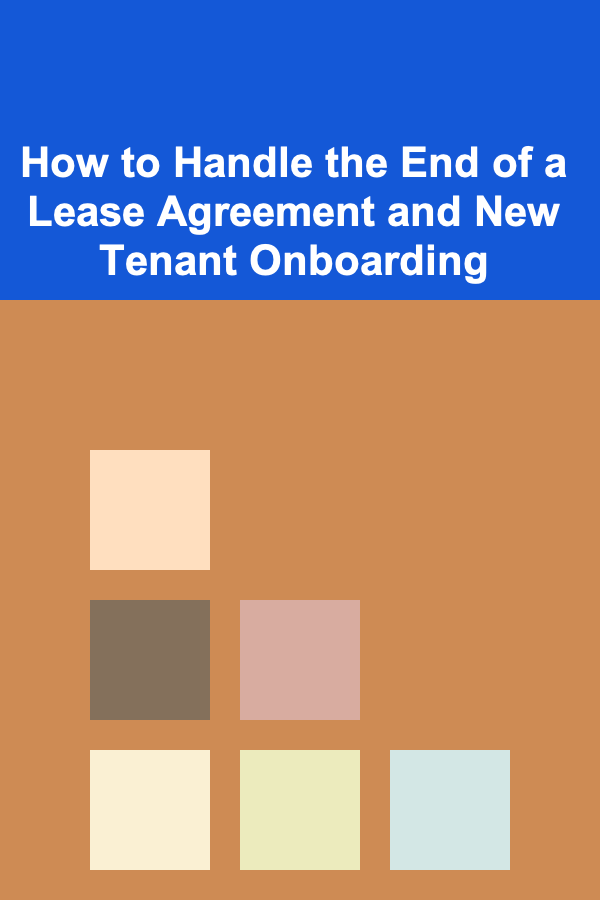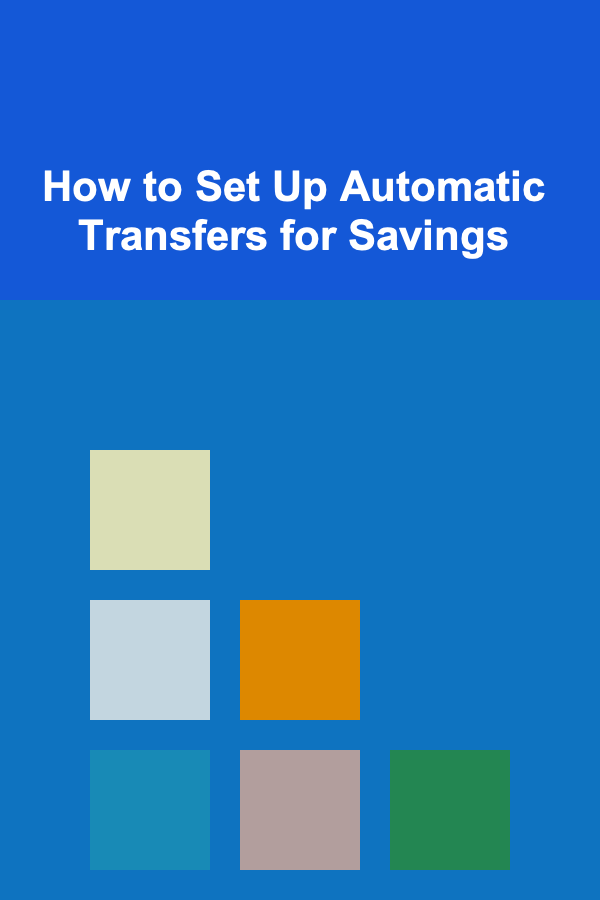
How to Budget for Homeownership as a First-Time Buyer
ebook include PDF & Audio bundle (Micro Guide)
$12.99$5.99
Limited Time Offer! Order within the next:

Buying a home is one of the most significant financial decisions you'll make in your life. As a first-time homebuyer, navigating the process can be both thrilling and daunting. From the excitement of owning your own space to the responsibility of maintaining a home, homeownership comes with both financial rewards and challenges.
A successful home purchase involves more than just securing a mortgage loan. It requires careful financial planning, budgeting, and a solid understanding of the various costs associated with homeownership. In this guide, we'll walk you through the essential steps for budgeting as a first-time homebuyer, helping you prepare for the financial commitment and setting yourself up for long-term success.
The Basics of Homeownership Costs
When it comes to buying a home, the financial obligations extend far beyond the purchase price. To budget properly for homeownership, it's crucial to understand all the potential costs involved. These can be broken down into one-time costs (upfront costs) and ongoing costs that you'll need to budget for each month and year.
1.1 Upfront Costs of Buying a Home
These are the costs that you need to pay before and during the process of purchasing a home. They can vary depending on where you live, the price of the home, and your personal financial situation.
Down Payment
The down payment is one of the most significant upfront costs of buying a home. It's typically a percentage of the home's purchase price, with most conventional mortgages requiring anywhere from 3% to 20% down. The more you can put down upfront, the less you'll need to borrow, and the lower your monthly mortgage payments will be.
- Conventional Loan: A traditional loan usually requires 20% of the home's purchase price.
- FHA Loan: A Federal Housing Administration (FHA) loan requires a minimum down payment of 3.5%.
- VA and USDA Loans: For qualified buyers, these loans may require no down payment at all.
Closing Costs
Closing costs are fees you'll need to pay at the end of the home-buying process, in addition to your down payment. These costs include a variety of services required to finalize the transaction, such as:
- Loan origination fees
- Home inspection costs
- Appraisal fees
- Title insurance
- Escrow fees
- Attorney fees (in some states)
Closing costs typically range from 2% to 5% of the home's purchase price. For example, if you're buying a $300,000 home, you may be looking at $6,000 to $15,000 in closing costs.
Home Inspection and Appraisal
While technically part of your closing costs, home inspections and appraisals are crucial to ensure you're not buying a property that has serious underlying issues. These costs typically range from $300 to $1,000, depending on the location and type of inspection.
- Home Inspection: A licensed professional will inspect the home to check for structural issues, plumbing problems, and other red flags.
- Appraisal: Lenders typically require a professional appraisal to ensure the home is worth the loan amount.
Moving Costs
Moving costs can also add up quickly. These expenses include hiring a moving company, renting a truck, packing materials, and any other logistical costs associated with relocating. Depending on the distance and amount of belongings, moving can cost anywhere from a few hundred dollars to thousands.
1.2 Ongoing Costs of Homeownership
Once you've settled into your new home, there are recurring costs that you'll need to budget for each month. These expenses can be grouped into mortgage payments, utilities, maintenance, insurance, and taxes.
Mortgage Payments
Your mortgage payment will likely be the most substantial monthly expense as a homeowner. This payment typically includes:
- Principal: The actual loan amount you borrowed to buy the home.
- Interest: The cost of borrowing the money.
- Taxes: Property taxes may be included in your monthly mortgage payment. If not, you'll need to pay them separately.
- Insurance: Homeowners insurance covers your property and belongings in case of damage or theft. Lenders often require this insurance as part of your mortgage.
Your mortgage payment will depend on the size of your loan, the interest rate, and the term (the number of years you agree to pay the loan back). While many homeowners opt for a 30-year mortgage, a 15-year mortgage will have higher monthly payments but cost less in interest over time.
Property Taxes
Property taxes are assessed by local governments and can vary widely depending on the area where you live. Property tax rates can range from 0.5% to 2% of your home's value, paid annually or semi-annually.
In some cases, property taxes are included in your monthly mortgage payment, while in others, you may need to pay them separately.
Homeowners Insurance
Homeowners insurance is essential to protect your investment in the event of damage from fire, theft, or natural disasters. The cost of homeowners insurance can vary based on factors such as the value of your home, the area where you live, and the type of coverage you select.
The average cost of homeowners insurance in the U.S. is around $1,000 to $1,500 per year, though this can vary significantly.
Maintenance and Repairs
Homeownership also comes with the ongoing responsibility of maintaining your property. These costs can be unpredictable, but it's essential to set aside money for general maintenance and repairs. A good rule of thumb is to budget 1% to 2% of your home's purchase price annually for upkeep.
Examples of common maintenance costs include:
- HVAC maintenance
- Lawn care and landscaping
- Cleaning gutters
- Pest control
- Roof repairs
It's always a good idea to have an emergency fund for unforeseen repairs like a leaking roof or broken water heater.
Utilities
Utilities include services such as water, electricity, gas, trash collection, and internet. The cost of utilities can vary depending on the size of your home, the climate in your area, and how energy-efficient your home is.
On average, homeowners spend between $200 to $400 per month on utilities, but it's important to research your area to get a more accurate estimate.
Homeowners Association (HOA) Fees
If your home is located in a community with an HOA, you may be required to pay monthly or annual fees. HOA fees cover the cost of maintaining communal areas, such as parks, pools, and security services. These fees can range from $50 to $500 or more per month.
Steps for Budgeting for Homeownership
Now that you understand the various costs associated with homeownership, it's time to develop a budget that works for your financial situation. The following steps will help you navigate the process and create a sustainable financial plan.
2.1 Assess Your Financial Health
Before jumping into homeownership, take a close look at your current financial situation. Review your income, expenses, and existing debts to determine how much you can realistically afford to spend on a home.
Use a debt-to-income (DTI) ratio to help assess your affordability. Lenders generally recommend that your total monthly debt payments (including your mortgage) shouldn't exceed 36% to 43% of your monthly gross income.
2.2 Determine Your Down Payment
The more you can put down on your home, the less you'll need to borrow, which can lead to lower monthly payments and less interest over the life of the loan. Start saving for your down payment early, and consider setting up a dedicated savings account for the purpose of homeownership.
Look into down payment assistance programs if you're a first-time buyer. Many states and local governments offer grants or low-interest loans to help you with the down payment.
2.3 Create a Monthly Budget
Once you've determined how much you can afford to spend on your home, create a monthly budget to track your expenses and plan for the future. Be sure to include all the homeownership-related costs, including:
- Mortgage payment
- Property taxes
- Insurance
- Maintenance fund
- Utilities
Ensure you leave room for savings and unexpected expenses. It's also a good idea to have a home emergency fund to cover large repairs or unforeseen circumstances, such as an appliance breaking down or a plumbing issue.
2.4 Consider Future Financial Goals
Homeownership is a long-term commitment, and it's important to consider how it fits into your broader financial goals. Are you planning to start a family? Do you want to save for retirement or take vacations? Homeownership should align with these goals, and budgeting accordingly will ensure you can maintain a balanced financial life.
Final Thoughts
Becoming a homeowner is a major milestone, but it requires careful planning and budgeting. By understanding the upfront and ongoing costs of homeownership, you can create a realistic financial plan that sets you up for success. Remember that budgeting for homeownership is not a one-time event; it's an ongoing process that requires flexibility and regular financial check-ins.
As a first-time homebuyer, make sure you're prepared by assessing your financial health, saving for a down payment, and accounting for the various costs associated with owning a home. By following these guidelines and maintaining a disciplined approach to budgeting, you'll be well on your way to managing the responsibilities of homeownership and enjoying the rewards that come with it.
Reading More From Our Other Websites
- [Personal Investment 101] Turn Your Deep Learning Knowledge into a Passive Income Source
- [Home Family Activity 101] How to Organize a Family Talent Show and Art Exhibition
- [Organization Tip 101] How to Plan Balanced Meals That Are Easy to Prepare
- [Home Security 101] How to Keep Your Home Safe from Social Media Over-sharing
- [Home Maintenance 101] How to Perform Energy-Efficient Home Upgrades on a Budget
- [Personal Care Tips 101] How to Choose a Toner Based on Your Skin's Needs
- [Simple Life Tip 101] How to Adopt a Simple Lifestyle While Maintaining a Professional Image
- [Home Lighting 101] How to Light Your Home Office to Boost Productivity and Comfort
- [Home Security 101] How to Protect Your Home While You're on Vacation
- [Personal Investment 101] How to Take Advantage of Tax Loss Harvesting in Your Portfolio

How to Clean Your Home When You're Short on Time
Read More
How to Handle the End of a Lease Agreement and New Tenant Onboarding
Read More
How to Set Up a Family Room Snack Station for Movie Nights
Read More
How to Set Up Automatic Transfers for Savings
Read More
Brewing Coffee with the Delter Press: A Comprehensive Guide
Read More
10 Tips for Effective Communication with Baseball Players
Read MoreOther Products

How to Clean Your Home When You're Short on Time
Read More
How to Handle the End of a Lease Agreement and New Tenant Onboarding
Read More
How to Set Up a Family Room Snack Station for Movie Nights
Read More
How to Set Up Automatic Transfers for Savings
Read More
Brewing Coffee with the Delter Press: A Comprehensive Guide
Read More